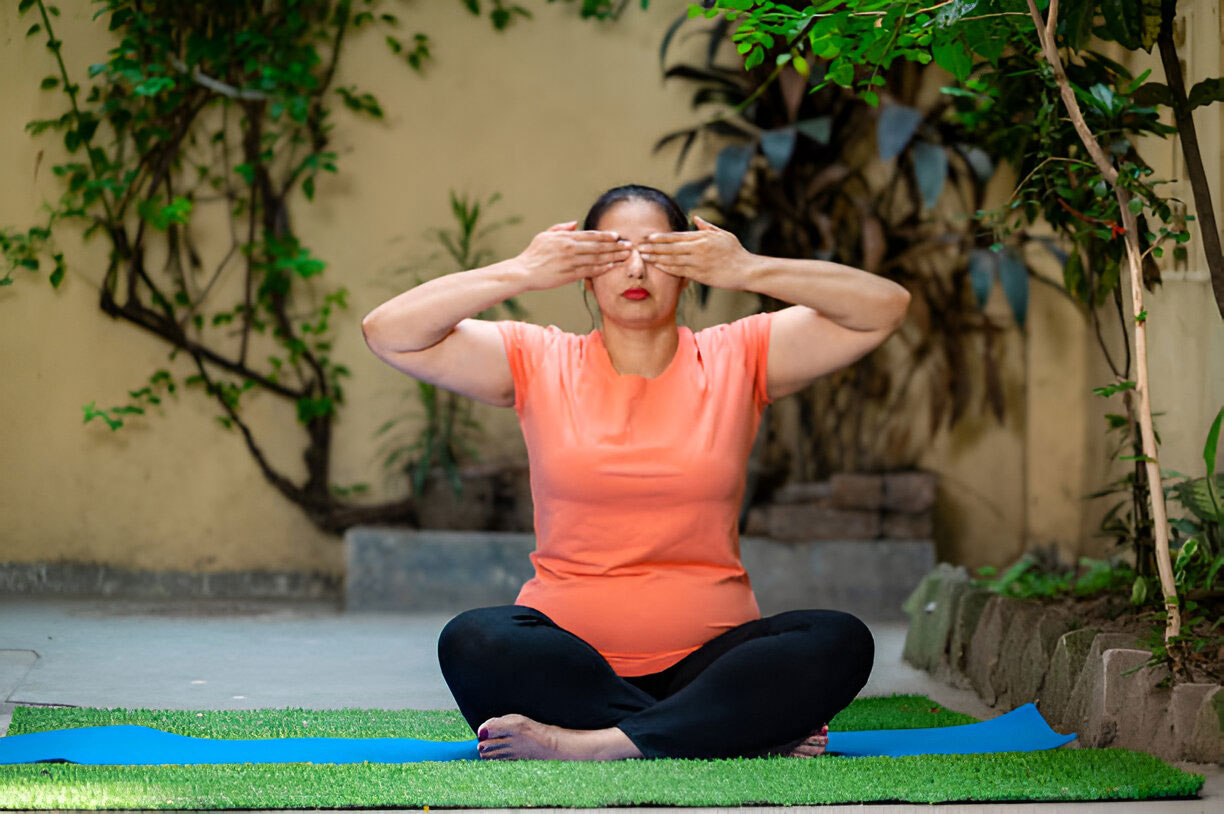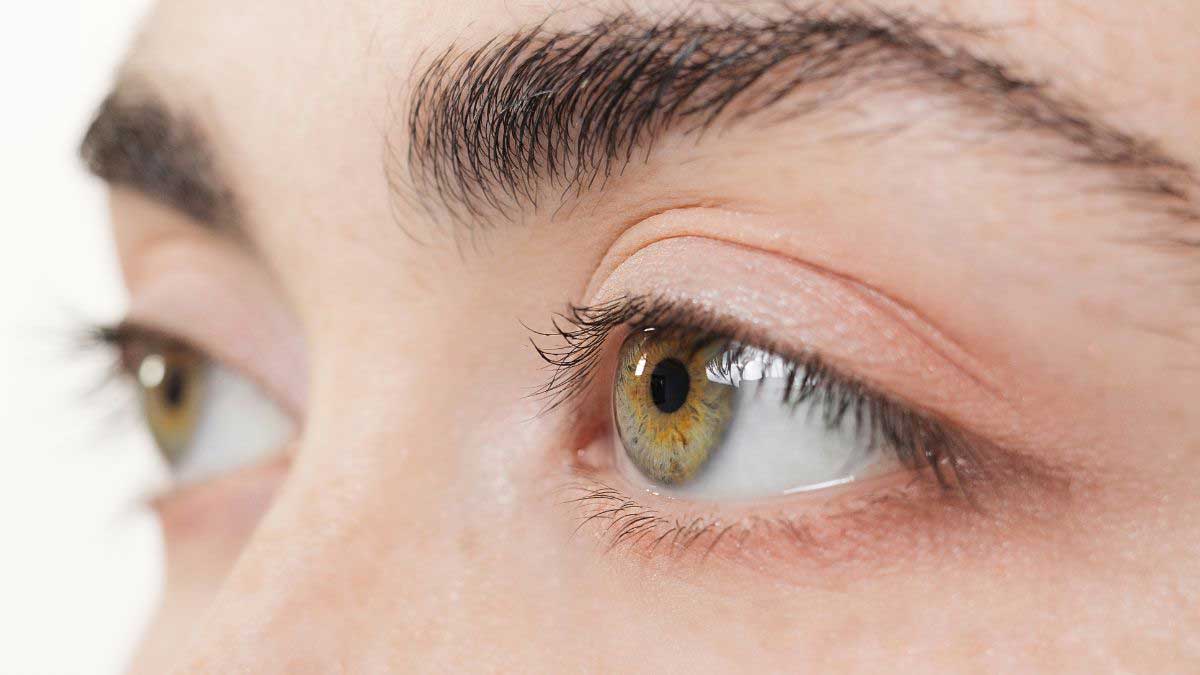Yoga Exercises for Eyesight Improvement
In the digital age, eye health has become a significant concern for many. Prolonged screen time, exposure to blue light, and poor lifestyle choices have contributed to declining vision for a large portion of the population. However, yoga offers a natural and effective way to improve eyesight and maintain overall eye health. This article will explore yoga exercises for eyesight improvement, explaining how these simple practices can lead to better vision and healthier eyes.
The Importance of Eye Health
Your eyes play a crucial role in everyday activities, from reading and driving to working on a computer. Maintaining good eye health is essential for quality of life. Poor eyesight can lead to various problems, including headaches, eye strain, and difficulties in focusing. In severe cases, it can significantly affect one’s ability to perform daily tasks.
Good eye health requires regular check-ups, a balanced diet, and protective measures like wearing sunglasses outdoors. However, incorporating yoga exercises for eyesight improvement into your daily routine can offer additional benefits, naturally enhancing your vision over time.
How Yoga Can Improve Eyesight
Yoga is a holistic practice that promotes overall well-being, including physical, mental, and emotional health. When it comes to eye health, specific yoga exercises target the eye muscles, improving their flexibility, strength, and endurance. These exercises also promote relaxation and reduce eye strain, making them effective in improving vision.
Yoga exercises for eyesight improvement work by:
- Strengthening eye muscles.
- Enhancing blood circulation to the eyes.
- Reducing stress and tension that can contribute to poor vision.
- Improving concentration and focus.
Top Yoga Exercises for Eyesight Improvement
Here are some of the best yoga exercises for improving eyesight. These exercises are easy to perform and can be done in the comfort of your home or office.
1. Palming
How to Perform:
- Sit comfortably with your eyes closed.
- Rub your palms together briskly until they become warm.
- Gently place your warm palms over your closed eyes without applying pressure.
- Relax and focus on the darkness, breathing deeply.
- Hold this position for a few minutes before slowly removing your hands.
Benefits:
- Relieves eye strain and fatigue.
- Promotes relaxation.
- Enhances blood circulation to the eyes.
2. Blinking
How to Perform:
- Sit comfortably with your eyes open.
- Blink rapidly for 10 to 15 seconds.
- Close your eyes and relax for a few seconds.
- Repeat this exercise 5 to 6 times.
Benefits:
- Reduces dryness and irritation.
- Improves tear production.
- Strengthens the eye muscles.
3. Focus Shifting
How to Perform:
- Sit comfortably and hold a pencil or finger at arm’s length.
- Focus on the tip of the pencil for a few seconds.
- Slowly move the pencil closer to your nose, keeping your focus on the tip.
- Move the pencil back to arm’s length.
- Repeat 10 times.
Benefits:
- Enhances focusing ability.
- Strengthens eye muscles.
- Improves coordination between both eyes.
4. Near and Far Focus
How to Perform:
- Sit comfortably and focus on an object about 10 inches away.
- After a few seconds, shift your focus to an object 10 to 20 feet away.
- Hold your focus on the distant object for a few seconds.
- Return your focus to the closer object.
- Repeat this exercise 10 times.
Benefits:
- Improves focusing flexibility.
- Strengthens eye muscles.
- Reduces eye strain from close-up work.
5. Eye Rolling
How to Perform:
- Sit with your spine straight and head still.
- Look up and slowly roll your eyes in a clockwise direction.
- After completing a circle, roll your eyes counterclockwise.
- Repeat the exercise 10 times in each direction.
Benefits:
- Enhances eye muscle flexibility.
- Improves coordination and control.
- Reduces tension in the eyes.
6. Trataka (Concentrated Gazing)
How to Perform:
- Sit comfortably with a candle placed at eye level about 3 feet away.
- Focus on the flame without blinking for as long as possible.
- When your eyes begin to water, close them and visualize the flame in your mind.
- Practice this exercise for 5 to 10 minutes daily.
Benefits:
- Improves concentration and focus.
- Strengthens the optic nerves.
- Enhances visual clarity.
7. Side-to-Side Eye Movements
How to Perform:
- Sit comfortably with your head still.
- Look as far to the left as possible, then slowly move your gaze to the right.
- Move your eyes side to side 10 to 15 times.
- Close your eyes and relax for a few seconds.
Benefits:
- Strengthens the eye muscles.
- Improves peripheral vision.
- Reduces eye strain.
8. Up and Down Eye Movements
How to Perform:
- Sit with your spine straight and keep your head still.
- Look up as far as possible, then slowly lower your gaze down.
- Move your eyes up and down 10 to 15 times.
- Close your eyes and relax for a few seconds.
Benefits:
- Improves vertical eye movement.
- Strengthens muscles responsible for up and down motion.
- Reduces tension in the eyes.
9. Diagonal Eye Movements
How to Perform:
- Sit comfortably with your head still.
- Look diagonally to the upper left, then slowly move your gaze to the lower right.
- Switch directions, moving your gaze from the upper right to the lower left.
- Repeat 10 times in each direction.
Benefits:
- Enhances coordination between different eye muscles.
- Improves overall eye flexibility.
- Reduces strain and improves focus.
10. Figure Eight
How to Perform:
- Imagine a large figure eight about 10 feet in front of you.
- Trace the figure eight slowly with your eyes, first moving clockwise.
- Reverse the direction and move counterclockwise.
- Perform this exercise for 2 to 3 minutes.
Benefits:
- Improves eye tracking ability.
- Enhances eye muscle flexibility.
- Reduces tension around the eyes.
11. Eye Massage
How to Perform:
- Close your eyes and gently massage your eyelids with your fingertips in circular motions.
- Focus on areas where you feel tension, such as around the temples and under the eyes.
- Continue massaging for 1 to 2 minutes.
Benefits:
- Increases blood circulation to the eyes.
- Relieves eye strain and tension.
- Promotes relaxation and reduces stress.
Additional Tips for Eye Health
In addition to practicing yoga exercises for eyesight improvement, there are several other measures you can take to enhance your eye health.
1. Maintain a Balanced Diet
A diet rich in vitamins and minerals is essential for eye health. Vitamin A, C, E, and zinc are particularly beneficial. Include foods like carrots, spinach, fish, nuts, and citrus fruits in your diet.
2. Regular Eye Check-Ups
Regular eye exams are important for detecting and addressing vision problems early. An eye specialist can provide guidance and treatment options to maintain optimal eye health.
3. Stay Hydrated
Drinking plenty of water helps maintain the moisture balance in your eyes, preventing dryness and irritation.
4. Use Proper Lighting
Ensure your workspace or reading area is well-lit to avoid straining your eyes. Poor lighting can cause discomfort and fatigue.
5. Limit Screen Time
Prolonged exposure to screens can cause digital eye strain. Practice the 20-20-20 rule: every 20 minutes, look at something 20 feet away for at least 20 seconds.
6. Wear Sunglasses
Protect your eyes from harmful UV rays by wearing sunglasses when outdoors. Prolonged exposure to sunlight can increase the risk of cataracts and other eye conditions.
Incorporating Yoga into Your Daily Routine
Incorporating yoga exercises for eyesight improvement into your daily routine is simple and beneficial. Consistent practice can lead to significant improvements in your vision and overall eye health.
Sample Daily Routine:
- Morning: Start your day with Palming and Focus Shifting exercises to prepare your eyes for the day ahead.
- Midday: During a break at work or school, practice Blinking and Side-to-Side Eye Movements to refresh your eyes.
- Evening: End your day with Trataka and Eye Massage to relax your eyes after a long day.
The Science Behind Yoga and Eyesight Improvement
The effectiveness of yoga exercises for eyesight improvement is supported by both traditional wisdom and modern research. Yoga not only targets the physical aspects of eye health but also addresses mental and emotional factors that can impact vision.
Stress Reduction
Chronic stress can negatively affect eye health. Stress hormones like cortisol can cause tension in the eye muscles, leading to strain and fatigue. Yoga’s focus on relaxation and deep breathing helps reduce stress, benefiting eye health indirectly.
Improved Blood Circulation
Many yoga exercises, such as Eye Rolling and Palming, stimulate blood flow to the eyes. Improved circulation ensures that the eyes receive sufficient oxygen and nutrients, which are crucial for maintaining healthy vision.
Muscle Strengthening
The eye muscles, like any other muscles in the body, require regular exercise to stay strong and flexible. Yoga exercises specifically target these muscles, improving their tone and function. Stronger eye muscles can better support the eyes, reducing the risk of strain and fatigue.
Enhanced Focus and Concentration
Practices like Trataka not only benefit the eyes but also improve mental focus and concentration. Better focus can reduce the tendency to squint or strain the eyes, further protecting vision.
Conclusion
Yoga exercises for eyesight improvement offer a natural and effective way to enhance vision and maintain overall eye health. These exercises are easy to perform, require no special equipment, and can be done anywhere. By incorporating them into your daily routine, along with other healthy habits, you can improve your eyesight and reduce the risk of vision problems.
Consistency is key. Regular practice of these yoga exercises, combined with a balanced diet, proper hydration, and regular eye check-ups, will help you achieve and maintain optimal eye health. Whether you’re looking to prevent vision issues or improve existing conditions, yoga provides a holistic approach that benefits not only your eyes but your entire well-being.
By focusing on both the physical and mental aspects of eye health, yoga exercises for eyesight improvement can be a valuable addition to your wellness routine. Start today and experience the benefits of clearer, healthier vision.








